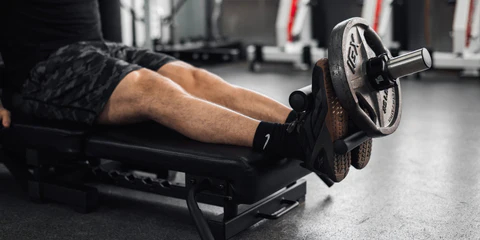The tib bar is a strong tool for improving lower body strength and stability because it stimulates particular muscles in the lower legs. You may enhance your balance, flexibility, and total lower body strength by including tib bar workouts into your training program. In this blog article, we will look at the muscles that the tib bar trains and the advantages of using tib bar workouts in your training routine.
Table of Contents
Tib Bar: An overview
The tib bar, also known as the tibialis bar, is a piece of equipment that is specifically intended to strengthen the muscles in the lower leg. It consists of a long bar with grips and a resistance mechanism with weights. The tib bar enables focused exercises that train the muscles that control ankle dorsiflexion and plantar flexion.
Muscles Targeted by the Tib Bar:
- Soleus and Gastrocnemius: Tib bar workouts also work the calf muscles, which include the gastrocnemius and soleus. These muscles are in charge of ankle plantar flexion, or pointing your toes downward. You may develop these muscles and enhance lower leg stability by practicing exercises like calf lifts and plantar flexion with the tib bar..
- Tib Bar Exercises also engage the peroneal muscles, which are positioned on the outside of the lower thigh. These muscles are essential for ankle stability, especially during lateral motions. Peroneal muscle strengthening can help avoid ankle sprains and improve overall lower leg stability.
Top 7 Advantages of Using a Tib Bar:
- Improve Isolation and Strengthening: The Tib Bar is meant to isolate and strengthen the Tibialis Anterior muscle, boosting overall lower body growth. This tailored approach might be difficult to attain only through standard workouts.
- Increase Balance and Stability: Improving your Tibialis Anterior strength can considerably improve your athletic performance, especially in sports that require fast changes in direction and remarkable balance.
- Injury Avoidance: A strong Tibialis Anterior protects against common lower-leg problems such as shin splints and stress fractures. Even if you’re healing from an injury, the Tib Bar may be a useful rehabilitation tool.
- Lower Limb Sculpting: When paired with toned calf muscle, the Wolverson Tib Bar may play a crucial part in sculpting well-defined lower legs, complimenting the entire body for individuals who prefer aesthetics in their training path.s.
- Improve Your Movement Mechanics: Whether you’re a passionate runner or like leisurely walks, a strong Tibialis Anterior muscle may improve your walking, running, and jumping mechanics. It is essential for foot dorsiflexion, a critical action during the toe-off phase of walking and running, as well as powerful leaps.
- Improve Vertical Jumping: Some fitness gurus believe that strengthening the Tibialis Anterior may increase vertical jump performance. Given its importance in jump mechanics, this idea has some credibility.
- Boost Your Running Speed: If you’re a runner, targeting the Tibialis Anterior with the Wolverson Tib Bar has the ability to enhance your running mechanics and increase your running speed.
Three Exercises You Can Do With a Tib Bar
Here are a few sample tib bar exercises you may integrate into your training regimen to target the muscles described above:
- Tib rises: Tib rises are a basic exercise that target the tibialis anterior muscle on the front of the shin. To do this exercise, stand with your toes on the tib bar and steadily elevate your heels as high as you can while activating the tibialis anterior. Hold the lifted position for a few seconds before lowering your heels. Aim for three sets of 12-15 reps.
- Tib Curls: Another excellent exercise that primarily targets the tibialis anterior is the tibial curl. Begin by sitting on a bench and placing the tib bar on top of your feet. Contract the tibialis anterior by flexing your toes downwards against the resistance of the bar. Hold the flexed posture for a few seconds before releasing and repeating. Perform three sets of ten to twelve repetitions.
- Tib Circles: Tib circles are a dynamic workout that works the tibialis anterior and ankle stabilizer muscles. To begin, place the tib bar on the floor. Stand on one foot and trace circles on the bar with your toes, spinning clockwise and counterclockwise. This exercise works the tibialis anterior while also improving ankle stability. Carry out two sets of 8-10 circles in each direction on each foot.
- Tib Hops: Tib hops are an advanced workout that combines plyometric movements with lower leg muscle strengthening. Begin in a standing stance with the tib bar horizontally positioned on the floor. Hop back and forth over the bar, paying attention to gentle landings and working the tibialis anterior and other lower leg muscles. Perform three sets of ten to twelve hops.
Conclusion
Finally, the tib bar is an excellent tool for targeting and developing lower leg muscles. You may increase lower leg strength, balance and stability, avoid injuries, and help in rehabilitation and recovery by including tib bar movements into your training program. The tib bar provides a concentrated and effective approach to lower body training, whether you’re an athlete, fitness enthusiast, or simply trying to enhance lower leg strength. Accept the advantages of tib bar workouts and unlock the full potential of your lower legs.
















